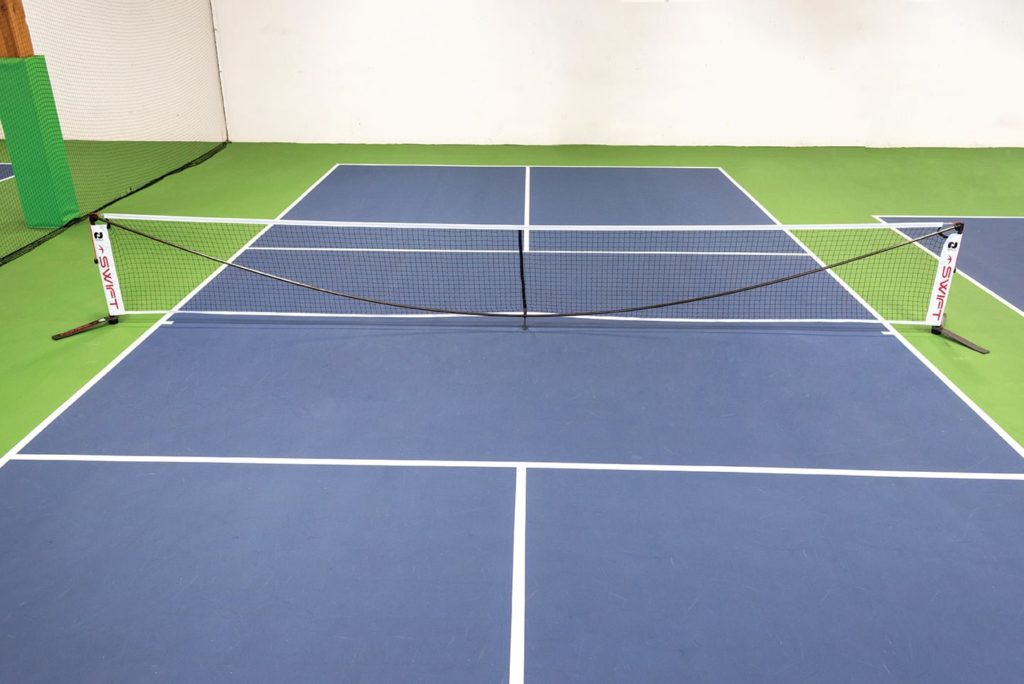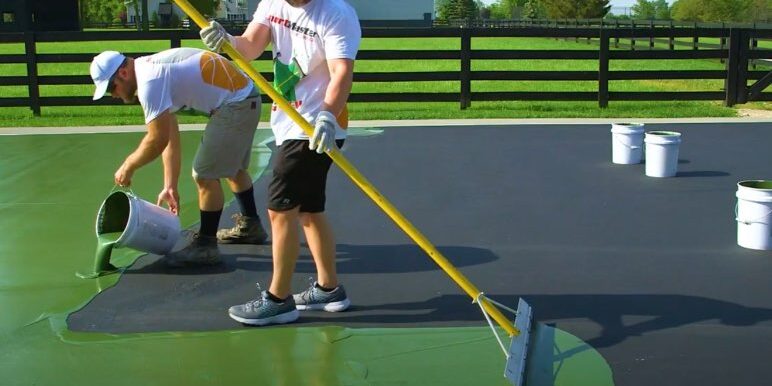Sustainable Practices in Pickleball Court Construction You Ought To Know
As the appeal of pickleball remains to increase, so too does the requirement for lasting methods in court construction. This method not just addresses ecological worries however also boosts the long life and capability of the courts. From choosing environmentally friendly products to executing reliable drain and energy-saving illumination options, there are countless methods to take into consideration. Yet, the effect of these techniques prolongs far past the court itself. Understanding how each aspect contributes to a more lasting future welcomes further expedition right into the detailed balance between leisure growth and environmental stewardship.
Selecting Eco-Friendly Products
Picking eco-friendly materials is a vital step in the building of sustainable pickleball courts. The choice of sustainable materials not only lessens ecological impact however additionally boosts the long life and efficiency of the court. Trick materials include recycled rubber for the surface area, which offers excellent resilience and shock absorption while drawing away waste from landfills.
Additionally, utilizing locally sourced products reduces transport emissions and sustains local economies. Pickleball court construction. As an example, making use of indigenous hardwoods for secure fencing and seats can supply a lasting visual while ensuring durability versus the aspects.
Incorporating permeable products for court structures can additionally add to sustainability by enabling natural water drain and minimizing overflow. These selections not just secure regional ecological communities but additionally promote healthier play atmospheres.
Effective Drain Solutions
While the choice of environment-friendly products is vital, applying reliable drain services is equally crucial for keeping sustainable pickleball courts. Correct drain not just protects the court surface from water damages but additionally decreases erosion and overflow, promoting environmental stability.
Effective drainage systems can include permeable paving, which permits water to infiltrate the ground instead than pooling on the surface area. This reduces the likelihood of standing water, which can result in mold and mildew and various other upkeep issues. Furthermore, incorporating tactically placed drain networks and swales can route excess water far from the court location, ensuring a completely dry having fun surface and preventing soil disintegration.
Utilizing indigenous vegetation in the landscape design around the courts can even more enhance drainage by absorbing excess water and lowering overflow. These plants require less watering and promote biodiversity, straightening with lasting methods.
Moreover, it is vital to regularly keep the water drainage system to ensure its lasting effectiveness. This includes cleaning particles and monitoring for clogs. By focusing on effective water drainage remedies, pickleball court producers can considerably add to the sustainability and durability of the facility, ultimately benefiting both gamers and the environment.
Energy-Efficient Illumination Options
As the demand for pickleball remains to expand, incorporating energy-efficient lighting alternatives into court style has actually become progressively vital for sustainability. Conventional lights systems commonly consume excessive power, adding to higher operational expenses and environmental impact. Embracing modern, energy-efficient technologies is important for both new constructions and remodellings.
LED (Light Emitting Diode) lights attracts attention as a leading selection due to its longevity and energy savings (Pickleball court construction). Contrasted to standard lights, LEDs use approximately 75% less energy and can last as much as 25 times longer, considerably decreasing upkeep prices. Moreover, the directional nature of LED lighting minimizes light contamination, making certain that illumination is concentrated on the court instead of surrounding areas.

Lasting Surface Alternatives
Exploring sustainable surface choices for pickleball courts has gotten traction amongst players and building contractors alike. The focus on eco-friendly products not just aligns with the expanding environmental recognition however also improves the performance and toughness of the courts.
This material offers excellent shock absorption, minimizing the danger of injuries for players while advertising sustainability. These tiles are simple to install and change, and their flexibility allows for numerous court setups.
All-natural yard courts are additionally becoming a lasting selection, advertising biodiversity and lowering the warmth island effect. However, they need routine upkeep and water, which may not straighten with all sustainability objectives.

Water Conservation Methods

An additional efficient technique includes the installation of rainwater harvesting systems. These systems store and gather rain for use in maintaining court surfaces and landscape design. This approach not only preserves potable water but additionally lowers reliance on municipal sources.
Furthermore, using drought-resistant landscape design around the courts is important. Native plants require less water and are better adjusted to regional environment conditions, hence reducing overall water consumption. In addition, utilizing effective watering systems, such as drip watering, ensures that water is delivered straight to plant roots, decreasing evaporation and waste.
Conclusion
Integrating sustainable techniques in pickleball court building dramatically this article contributes to ecological conservation and visit resource effectiveness. By prioritizing these methods, the building and construction of pickleball courts can straighten with more comprehensive environmental objectives while promoting longevity and functionality within communities.
As the appeal of pickleball proceeds to increase, so too does the requirement for lasting methods in court building and construction.Choosing environmentally friendly products is an essential action in the construction of sustainable pickleball courts. By prioritizing energy-efficient lighting alternatives, pickleball court erectors can add to a much more lasting future while satisfying the requirements of stakeholders and players alike.Integrating lasting surface options not just improves the performance of pickleball courts however likewise leads the means for executing effective water preservation techniques.Incorporating lasting methods in pickleball court building and construction significantly contributes to environmental preservation and source effectiveness.